Home >Hardware Tutorial >Hardware Review >Huawei Mate 60 Pro signal test: There are regrets, but there are more surprises
Huawei Mate 60 Pro signal test: There are regrets, but there are more surprises
- 王林forward
- 2023-12-27 17:58:291493browse
Although the official release will have to wait a few more days, the Huawei Mate 60 series and Mate X5, which were released in advance, still successfully stole the highlight moment of the new iPhone release. Of course, the "cut off" iPhone 15 relies not only on Huawei's exquisite release date. The excellent product strength of the Mate 60 series is also the main reason why Huawei's Mate series can still be "far ahead" after the release of the iPhone 15.
#In the first moment of release, Xiaolei also brought you the actual performance measurement of Huawei Mate 60 Pro. Judging from the results, the Kirin 9000S using hyper-threading technology does bring advanced possibilities to mobile phones, but the software adaptation at this stage still needs to be strengthened.
But according to Xiaolei’s experience during this period, Huawei Mate 60 Pro is not only “powerful but needs to be optimized” in terms of performance. In the "reserved program" of mobile phone signal and Internet speed, the performance of Mate 60 Pro is also reserved. In order to find out what the advantages and shortcomings of Huawei Mate 60 Pro are, Xiaolei has prepared a comparative test on Mate 60 Pro network speed and network quality for everyone.
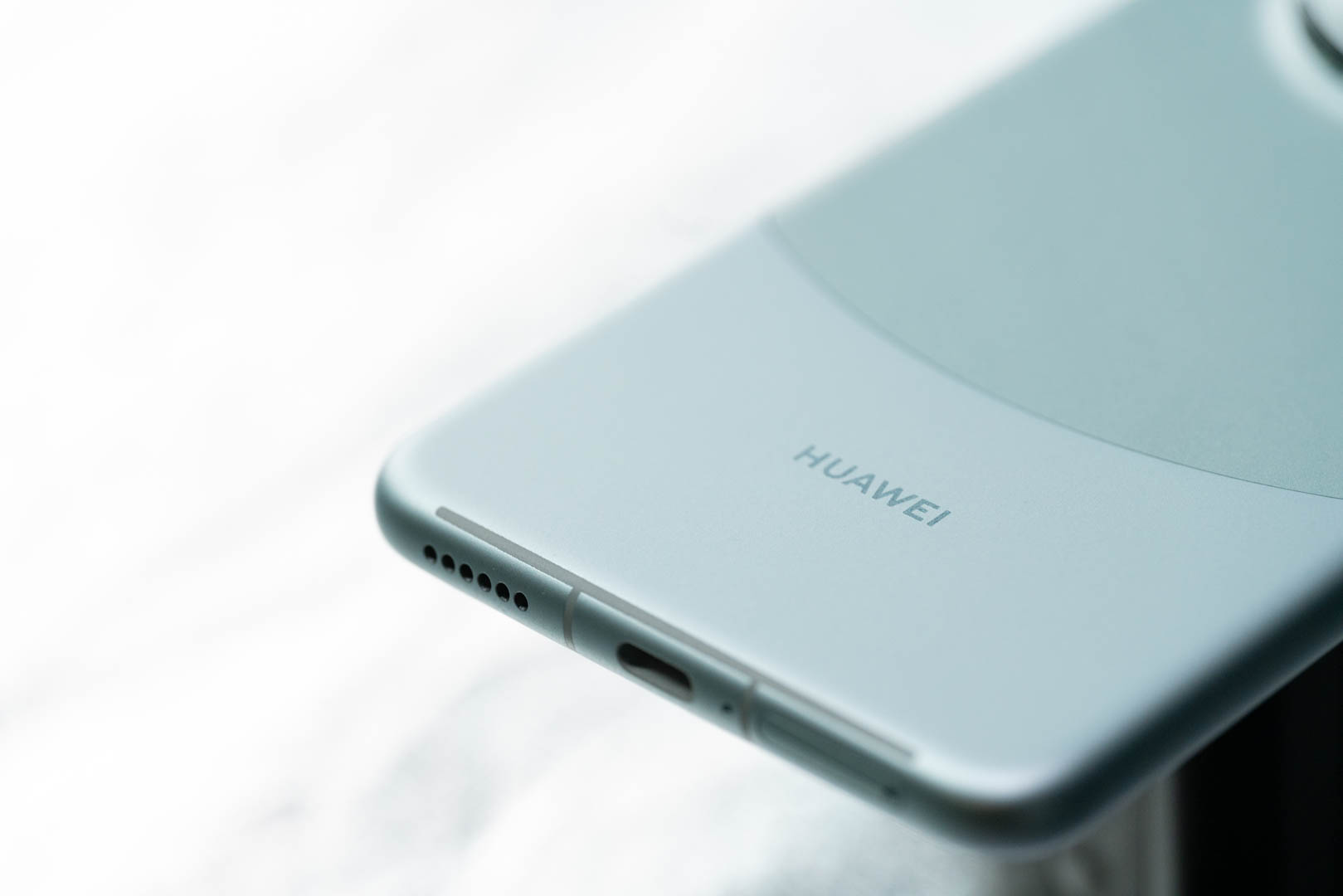
Picture source: Lei Technology
Equipment participating in the test For Huawei Mate 60 Pro and Moto G53, which is also known for its stable signal and call quality, the SIM card used is a China Telecom signal card that uses the same 5G package. The test scenes are divided into static and dynamic categories, and the locations are several common signal black spots in Xiaolei's daily life. The test software is the Tel network test launched by China Academy of Information and Communications Technology and China Tel Laboratory. The test servers used are the Guangzhou G101 speed test server that is the closest to the test.
The presence or absence of obstruction is the key to the speed of the network
The first is the indoor test scenario. Due to the complex indoor signal environment and severe obstruction. The speed performance of both mobile phones is not ideal. The download rate of Huawei Mate 60 Pro is 104Mbps and the uplink rate is 41Mbps, which is better than the G53's 91Mbps and 36Mbps. But strangely, another mobile phone of a certain brand was tested at the same time in the same scenario, and the downlink rate could reach the standard 5G network level of 300Mbps.
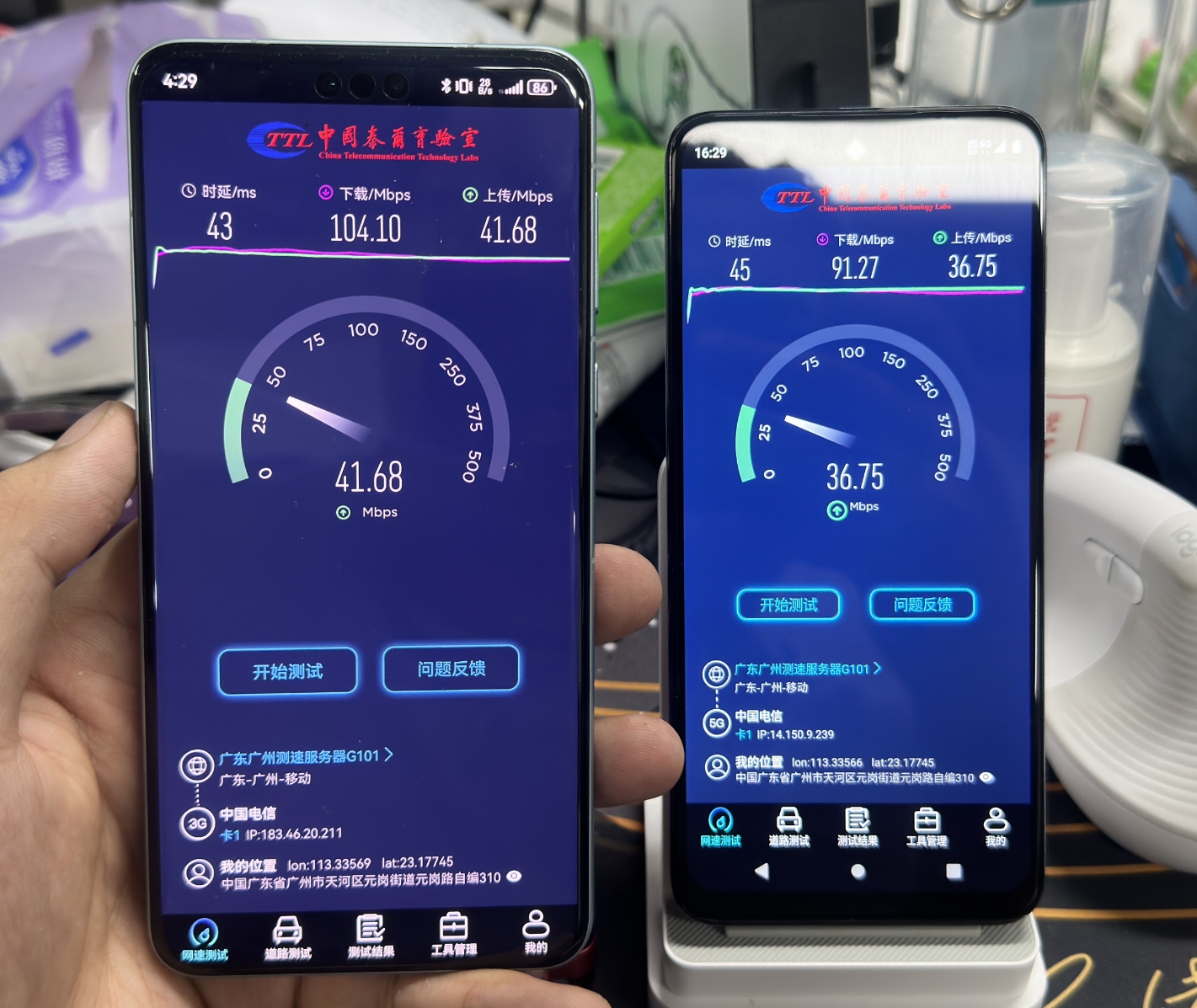
Picture source: Lei Technology
In terms of signal, Huawei Mate 60 The signal during the Pro test was -79dBm and the G53 was -85dBm. Although the signal quality of the two is 11 and 12 respectively, the difference is minimal, but in terms of signal strength, the Mate 60 Pro does perform better. The network latency and packet loss rate of the two mobile phones are almost the same, but the Mate 60 Pro's jitter performance of only 24.56/ms is significantly smaller than the G53's 41.78/ms.
When tested in another place in the office, the performance of the two is different: the speed of both has improved, downlink to 145Mbps/133Mbps, and uplink to 145Mbps/133Mbps. All have been improved to about 50Mbps. However, it is worth noting that the peak download rate of both mobile phones has reached 190Mbps, and the G53 has reached a level close to 200Mbps. In addition, the jitter performance of the G53 is also better than that of the Huawei Mate 60 Pro, only in the signal strength category. , Huawei Mate 60 Pro exceeded the G53’s -77dBm with -75dBm.
However, in the open area of the campus, the advantages of Huawei Mate 60 Pro are reflected. The download rate returns to the 5G standard level of 332Mbps. At the same time, the download rate of G53 It has also been increased to 249Mbps. But strangely, while the download rate has increased significantly, Huawei's upload rate has been relatively limited, reaching a level of 63Mbps, which is significantly lower than the G53's 92Mbps.
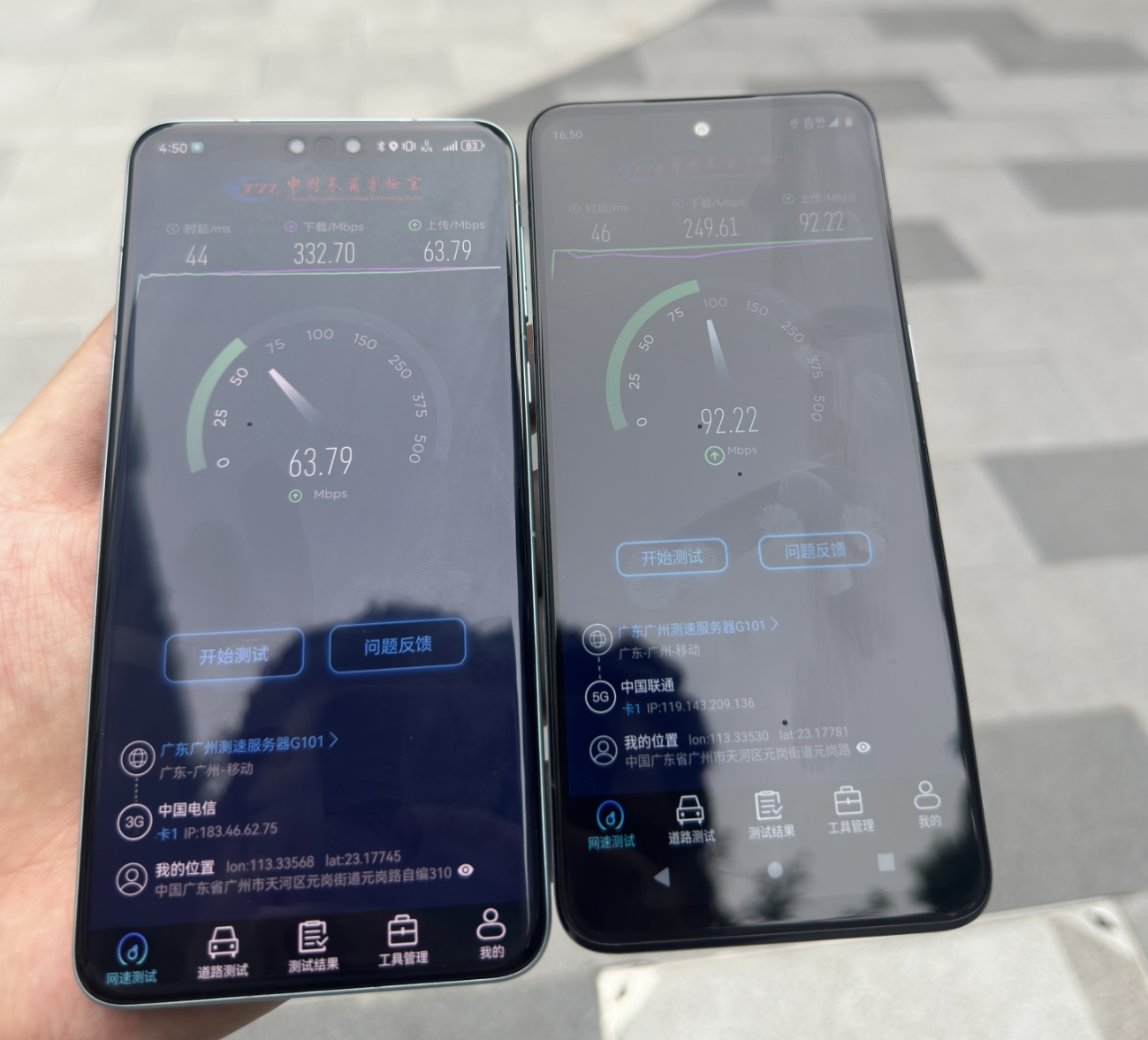
Picture source: Lei Technology
And on Moto G53 Another detail emerged: Even though Xiaolei used a China Telecom mobile phone card for the G53, the G53 used a China Unicom base station during the test. Even if China Unicom and China Telecom sign an agreement to jointly build relevant base stations, in theory, base stations from other companies will only be used when the signal quality of the original base station is too poor.

Picture source: Lei Technology
And during this test period , the base station signal strength of Huawei Mate 60 Pro is -86dBm, and the signal quality is 30; while the signal strength of the G53 connected to China Unicom's base station is only -116dBm, and the signal quality is only 4. It can be said that it is the representative of looking far away from the near.
Signal stability is more important than signal strength
In past signal tests, subway stations were often blind spots in signal coverage. However, in 2023 when operators strengthen 5G signal construction, this situation has been greatly improved. On the platform level of the Tianhe Passenger Terminal subway station, Huawei Mate 60 Pro and Moto G53 both have good 5G signal coverage. The Mate 60 Pro download reached 292Mbps, and the peak rate reached 333Mbps. The G53 also increased from 249Mbps to 265Mbps. It is worth mentioning that the two mobile phones are very close in terms of signal strength and signal quality, but Huawei still leads the Moto G53 with a score of -62dBm at -64dBm.
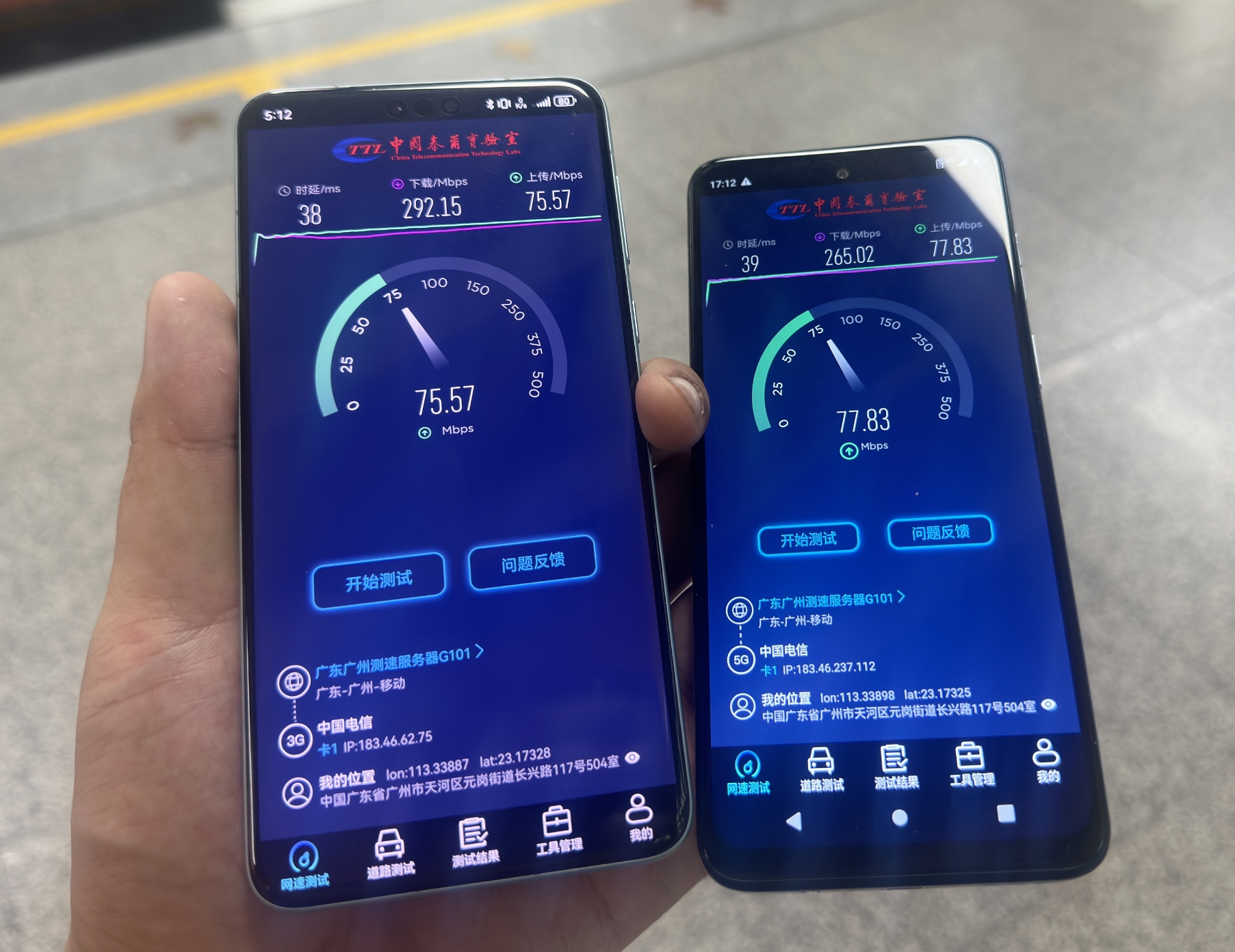
Photo source: Lei Technology
Another famous one in Guangzhou Metro Signal blind spots can be equally telling. On the platform level of Haixinsha subway station, Huawei i once again used worse signal strength to achieve better signal quality and faster network speed. Its downlink network speed was twice that of Moto G53, respectively. are 86Mbps and 40Mbps, and the signal quality is 32 and 3 respectively. The gap is very obvious.
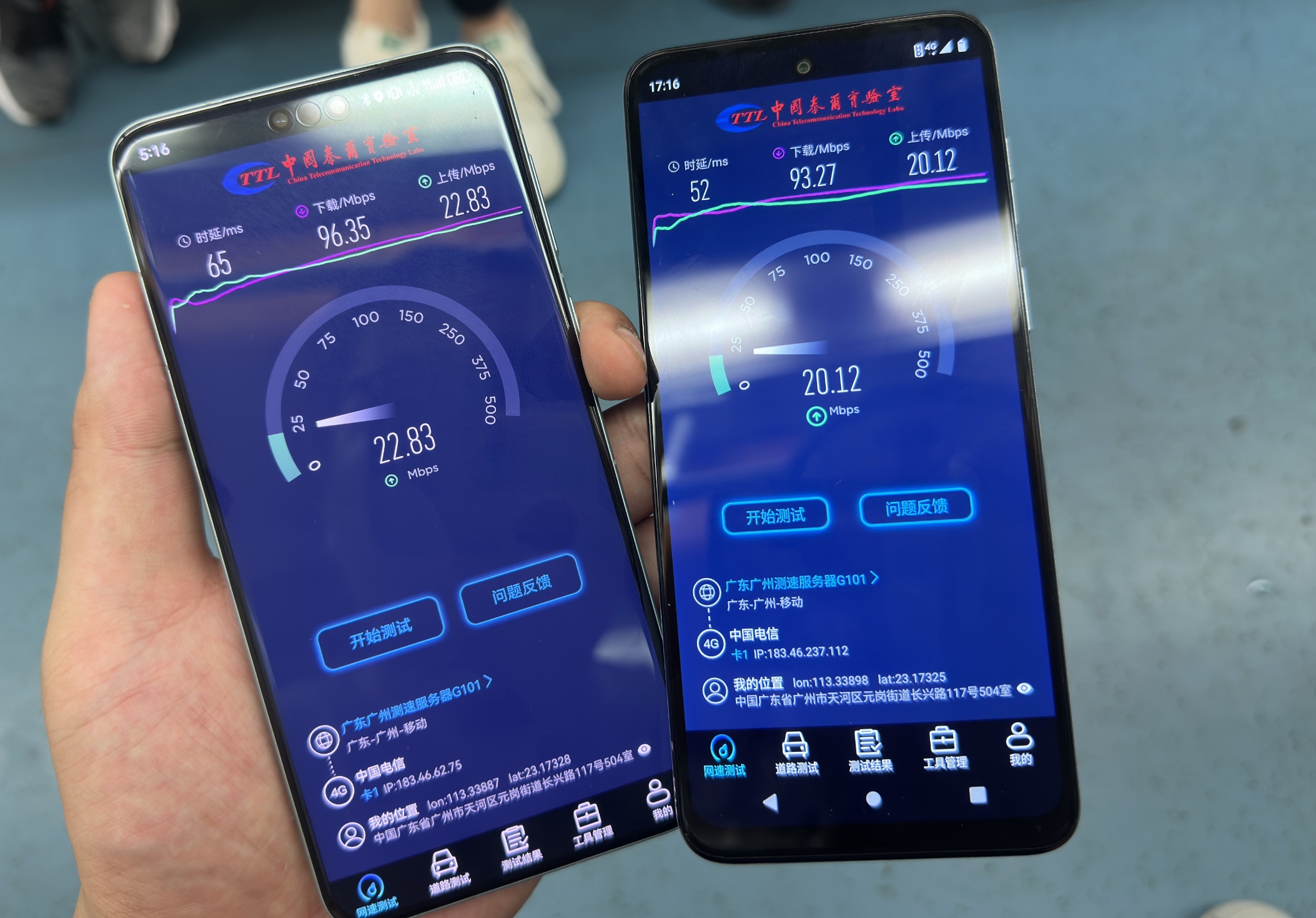
Picture source: Lei Technology
But the subway is moving In the car, the speed of both mobile phones dropped significantly: Huawei Mate 60 Pro dropped from 29Mbps to 96Mbps, and Moto dropped from 265Mbps to 93Mbps. But strangely, although the Huawei Mate 60 Pro has a higher SSR than the Moto G53, the actual signal strength and speed are exactly the opposite: Huawei's signal strength is only -95dBm, while Moto's signal strength is -62dBm. In addition, Huawei's signal quality is also significantly higher than Moto's. It seems that Huawei's signal is indeed well-deserved.
Considering that there were not many people in the subway station during Xiaolei’s test, in order to simulate a crowded scene, Xiaolei also conducted a signal test under the Canton Tower: two mobile phones Both signal strength and signal quality declined, but Huawei's signal still outperformed Moto's -100dBm with -94dBm. In terms of speed, the two are relatively close, 128Mbps and 122Mbps respectively.
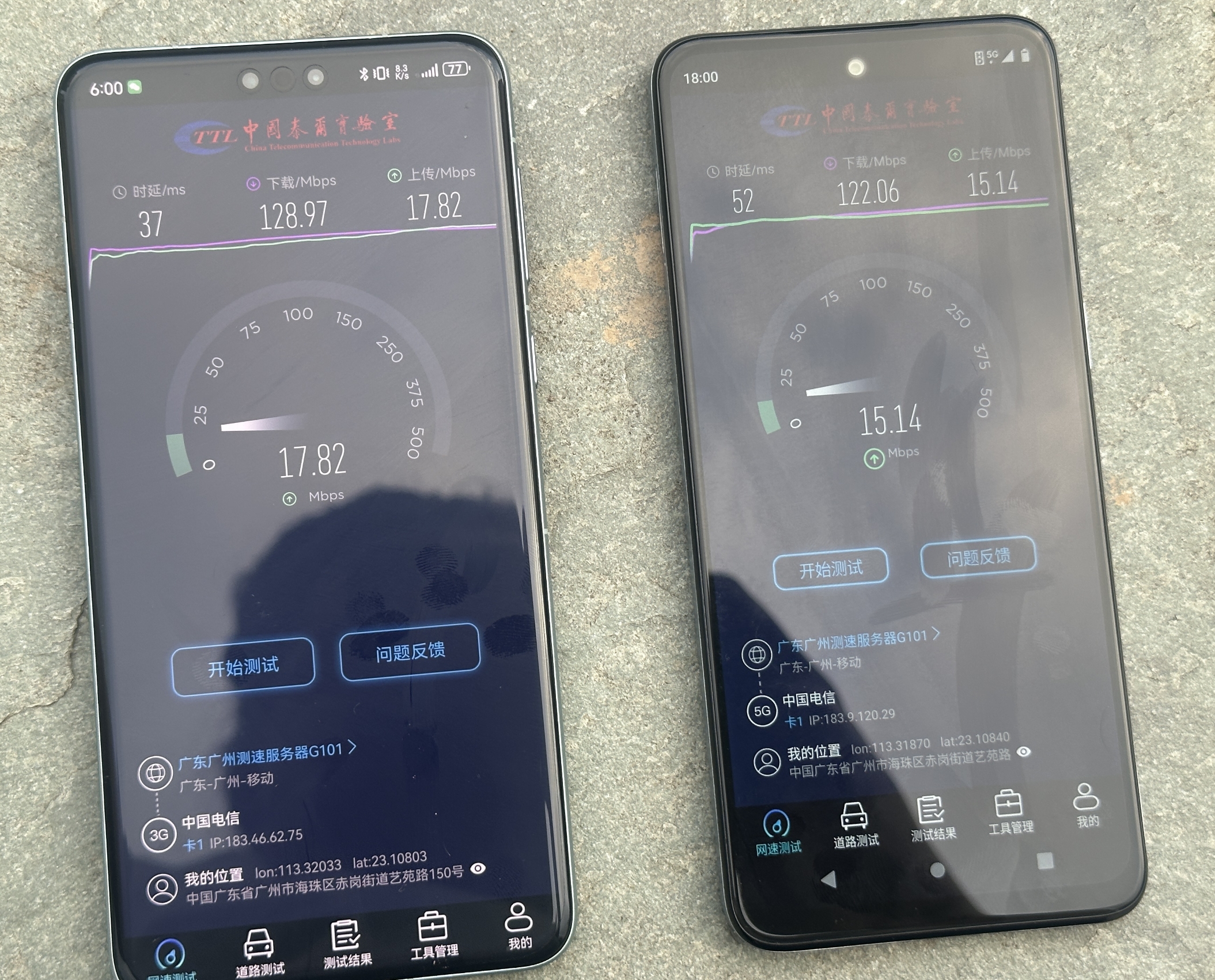
Picture source: Lei Technology
In addition to the subway station, Guangzhou The underground garage is actually a common signal blind spot. I believe everyone has seen those car owners who are forced to block the exit of the parking lot because there is no signal on their mobile phones. Therefore, Xiaolei also specially added two new scenarios for signal testing this time. In the parking lot on the second underground floor of the community, the difference between the two mobile phones is reflected:
Although the signal strength of Huawei Mate 60 Pro is only -100dBm, the signal quality is also It was only 18, but it still ran a downlink rate of 196Mbps, and the peak rate reached 245Mbps, which was the same as on the ground. The performance of G53 is a bit disappointing. When the signal strength is -112dBm and the signal quality is 11, the downlink rate of G53 is only 83Mbps.
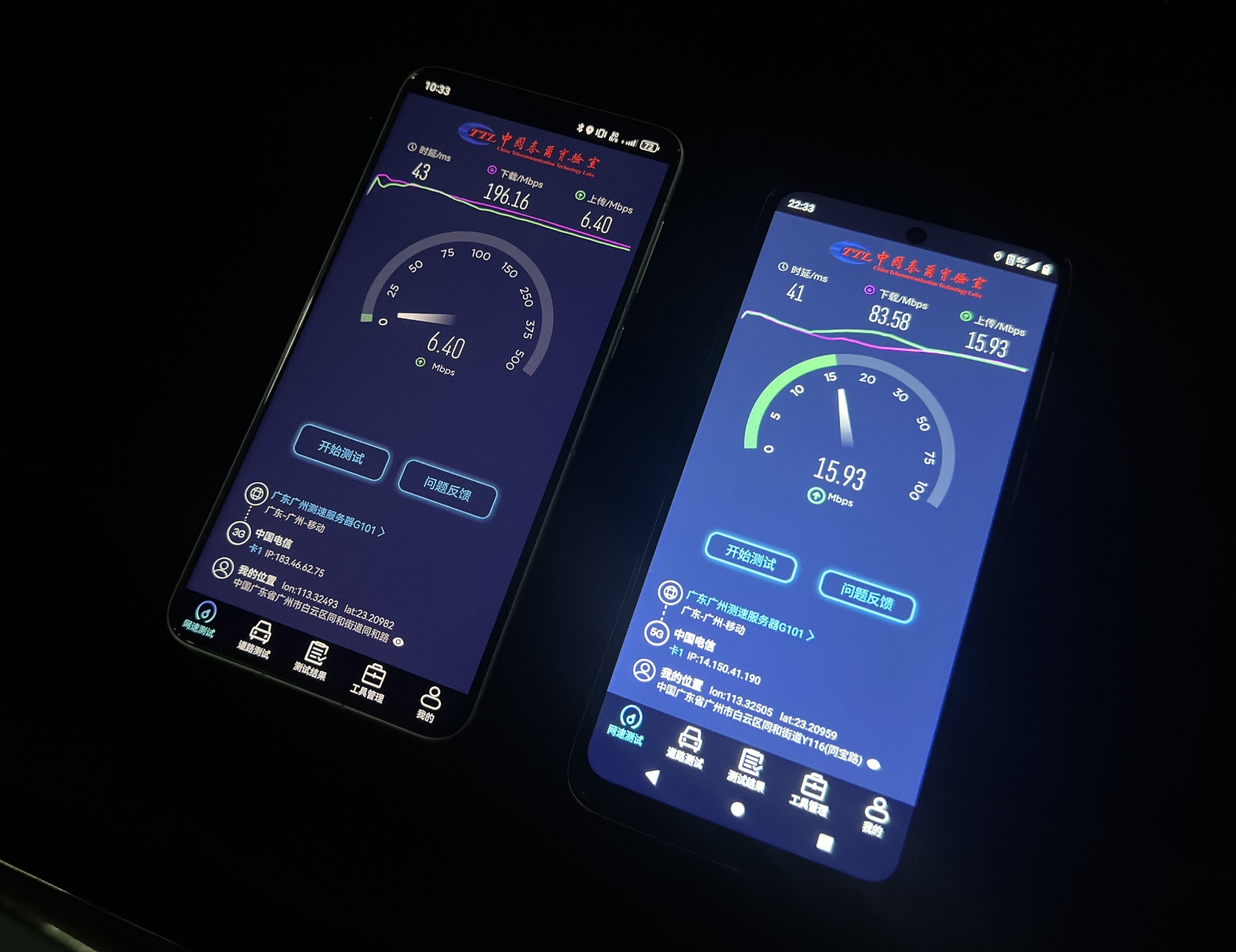
Picture source: Lei Technology
Both in the car test The gap has been further widened. Under the condition of -103dBm, Huawei Mate 60 Pro still maintains a downlink rate of 196Mbps. In other words, even if the vehicle is covered with a metallic glass film, the Huawei Mate 60 Pro can still use traffic to open the hotspot update system for the car in the second underground parking lot. Although the signal strength of G53 -108dBm is similar to that of Huawei Mate 60 Pro, the downlink rate is only 7.93Mbps, which is not even as good as when I use my car machine to turn on a hotspot for my phone.
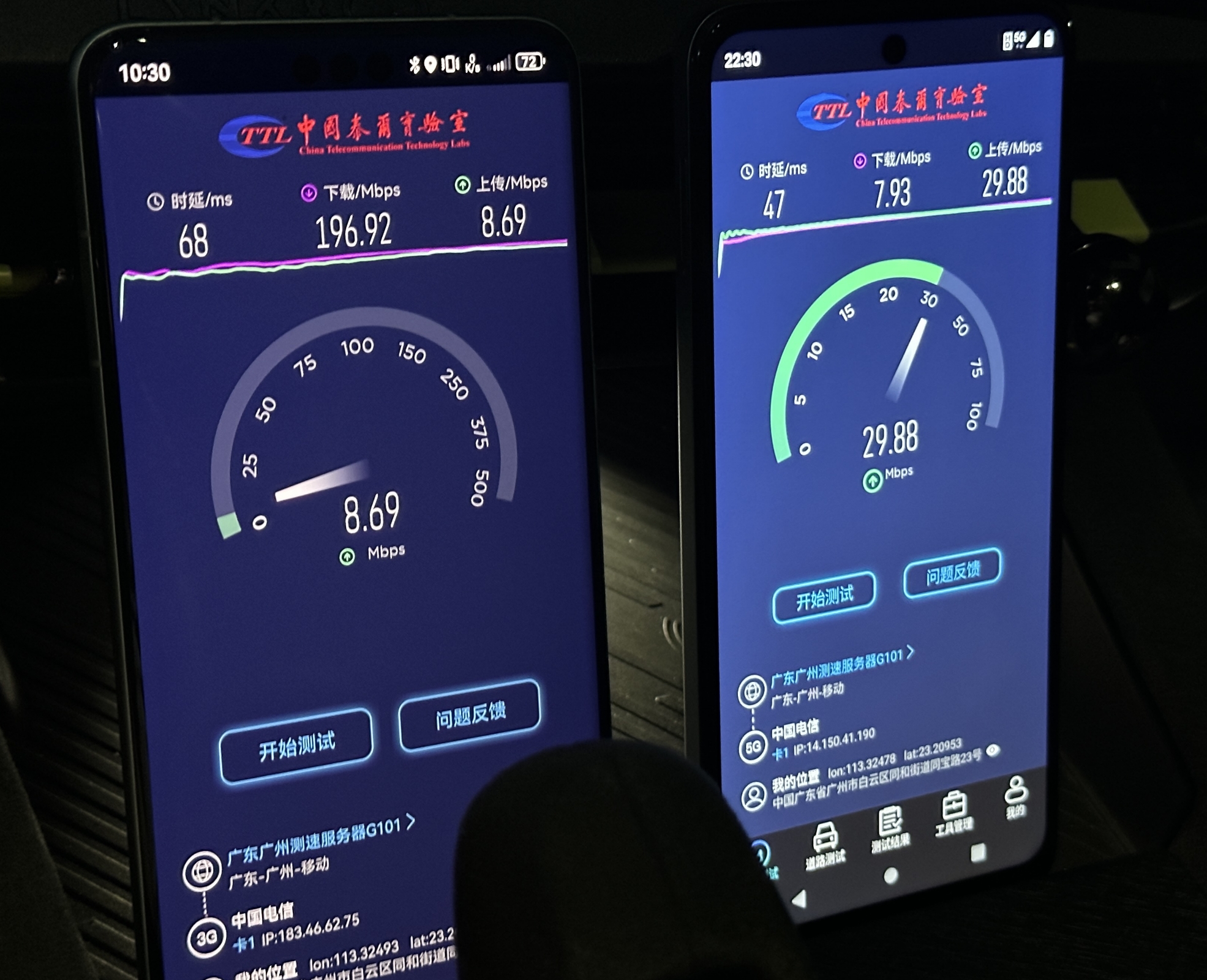
Picture source: Lei Technology
Huawei needs more time
In fact, by comparing the signal strength and the actual network speed, we can come to the conclusion that the Huawei Mate 60 Pro signal is “unique”. Even if the on-site signal strength is not high, Huawei Mate 60 Pro can still provide stable signal access capabilities, thereby ensuring a higher transmission rate and making extreme operations such as "opening hotspot updates for cars in underground parking lots" possible.
But judging from the test results, Huawei Mate 60 Pro also has its own problems in terms of signal. First of all, Huawei has hidden a large number of network option switches under the current system version, making it impossible for users to select the corresponding network based on the actual local network coverage conditions. In addition, the Mate 60 Pro under the current system version does not seem to be able to use other operators' base station access like other brands of mobile phones. Of course, this may also be because Huawei's signal is too good and there is no need to connect to other base stations. But until the phone unlocks more network options, we can't speculate further.
In addition, for the network speed test scenario, Huawei seems to have put more resources into the download scenario. The upload speed seems to be the shortcoming of Huawei Mate 60 Pro at this stage. In addition, the network jitter of Huawei Mate 60 Pro is also more obvious, and the transmission bandwidth is more commonly affected.
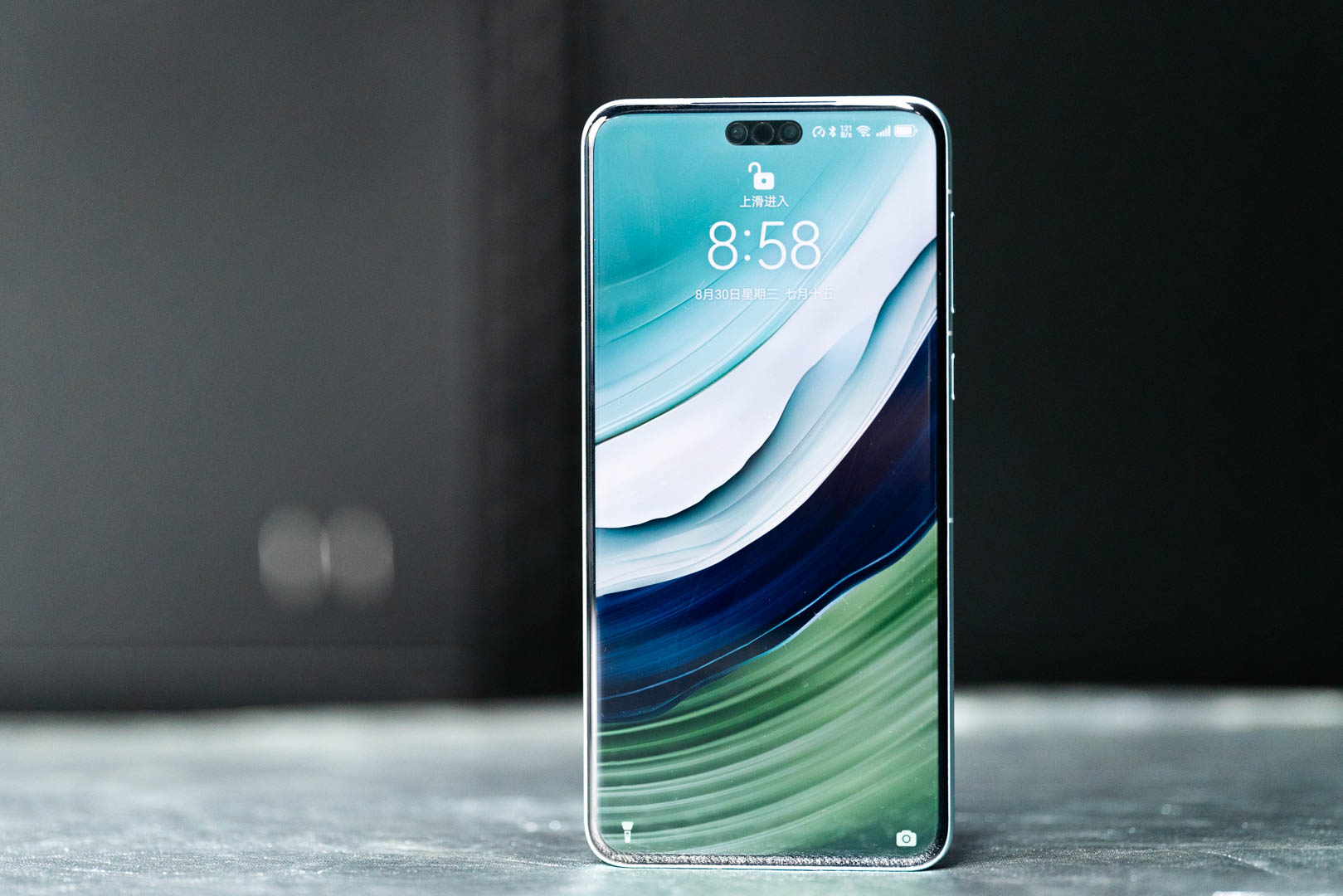
The above is the detailed content of Huawei Mate 60 Pro signal test: There are regrets, but there are more surprises. For more information, please follow other related articles on the PHP Chinese website!
Related articles
See more- Being held grudge by Ni Shuihan's intelligent NPC makes me feel bad...
- Actual measurement of signal strength comparison between iPhone 15 and Mate60P, results revealed
- Huawei Mate 60 Pro signal test: There are regrets, but there are more surprises
- Appreciate the multi-faceted charm of Aichir Time Elf: both fresh and smart, as well as smart and multi-functional
- Actual test results of Huawei satellite calls: the sound quality exceeds that of professional satellite phones

